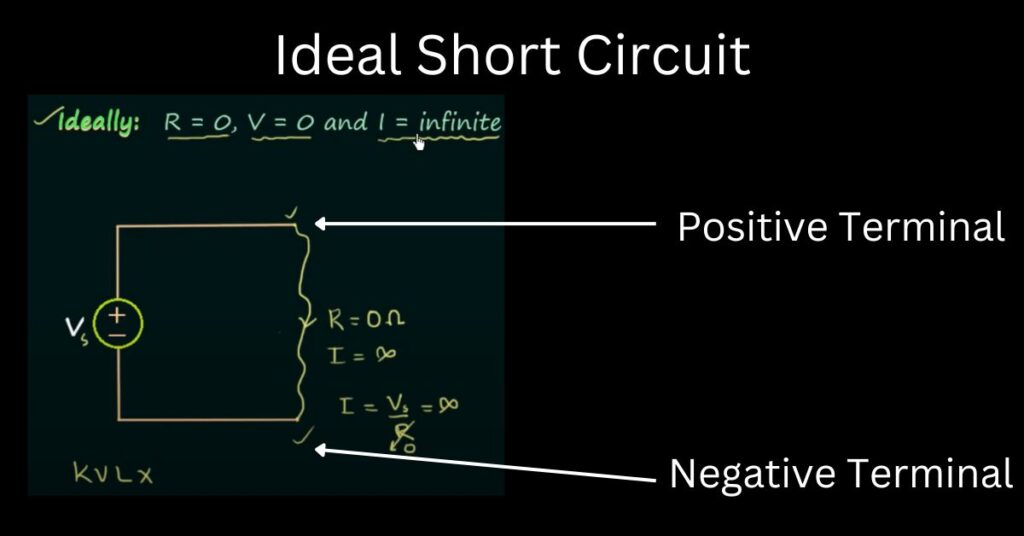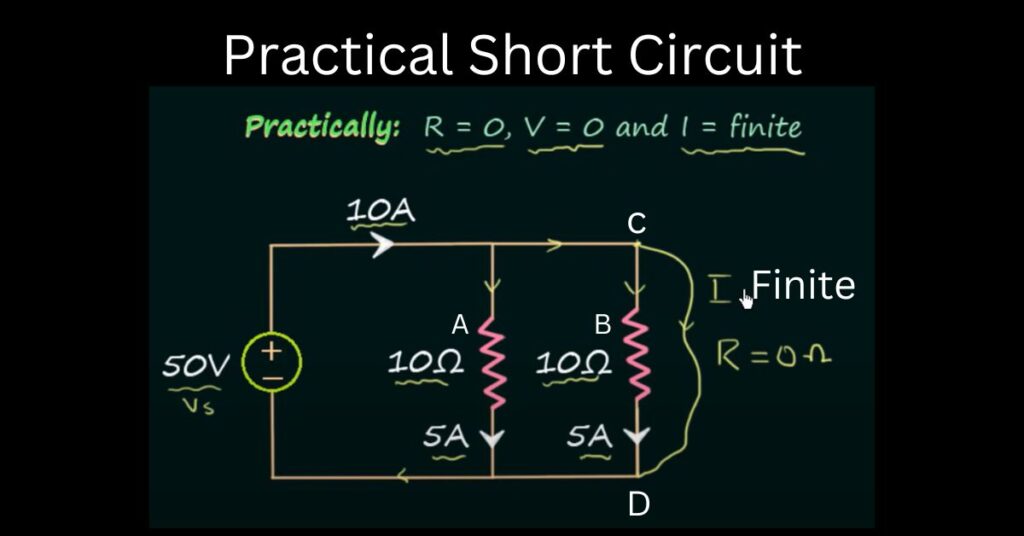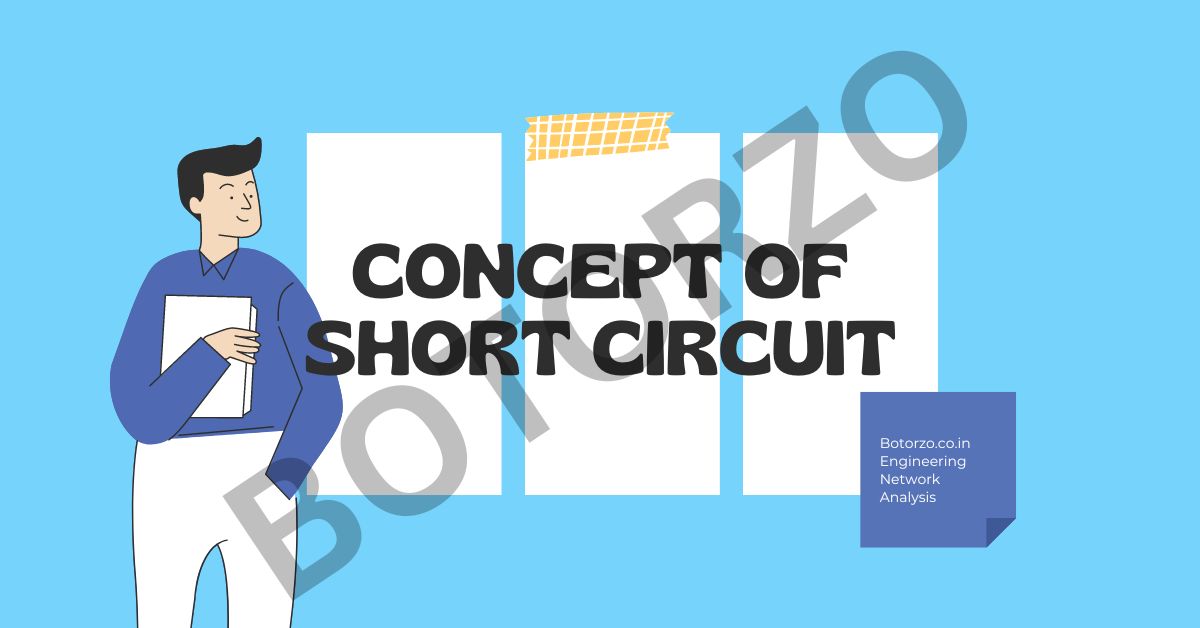In this article, we will understand the concept of a short circuits. A short circuit is an abnormal connection between two nodes of an electrical circuit that allows a current to travel along an unintended path with no or very low resistance.
So the first thing we need to understand is that a short circuit is not always desired. In general, a short circuit is an accidental case. And in this case, an abnormal connection is formed between two nodes of an electrical circuit. And these Nodes are at different potentials because of the abnormal connection. There exists an unintended path with no which means zero or very low resistance. As the resistance is zero, or very low, the current which is traveling along the unintended path is very very high.
Ideal Short Circuit
The current is very high. So this is what we mean by the short circuit. And now we will understand what is ideal and practical short circuit.

And we will begin with an ideal short circuit. In the case of an ideal short circuit, the resistance of the untended path is equal to 0 ohms. The voltage, or the potential difference across the unintended path, is equal to 0 volts. But in the current is equal to infinite, it is infinite because resistance is equal to 0.
Let’s understand this with the help of one example. In this example, I have taken one voltage source. the voltage source is having a positive terminal and a negative terminal as shown in the figure.
let’s say, by any means, there is an abnormal connection between the positive terminal and the negative terminal. Due to this abnormal connexion between these two nodes, which are at different potentials, there exists an unintended path. And this unintended path will have a resistance equal to 0 ohms, from ohms law, we know the current I is equal to voltage upon R. In our case, divided by the resistance, which is equal to 0. So from here, we are getting the current ‘I’ is equal to Infinity.
So a very high current will flow through the unintended path. Or you can say, in this circuit, due to this very high current is produced in the circuit. And practically speaking, this circuit is not possible. This is not possible because it clearly violated KVL, and KVL is based on the law of energy conservation. And as KVL is violated, the law of energy conservation is also violated. So ideal case of a short circuit is not possible.
Practical Short Circuit

Now we will move on to the practical case of a short circuit, And in the practical case, the resistance of the unintended path is equal to 0, the same as the ideal case. And the potential difference, or the voltage across the unintended path, is zero, the same as the ideal case, but the current is not infinite, It is finite.
Now we will take one example to understand this in a much better way. In this example, we are having a voltage source 50 volts and two resistances are connected in parallel, and both resistances are the same, 10 ohms. Current will divide equally, and therefore 5-ampere current flow to this resistor A and five amperes current will flow through resistor B as well.
Now let’s say, due to some reason, Nodes C and D are connected abnormally, and therefore there is an unintended part between two nodes that are at different potentials.
The resultant of the unintended path is equal to 0, and both nodes C and D are connected directly, and therefore they will not exist any potential difference. Now we will focus on the current. Initially, the current was equal to 10 amperes. And as soon as the unintended path is developed, this will not divide In these two parts, but it will directly flow through the unintended path.
It will move through a short circuit. So now you can see that current through the unintended part is equal to 10 amperes. And it is a finite value. It is not infinity. So in practical cases, the current is finite, and in practical cases, the current is flowing through the unintended path because the resistance of the path is very low, and the current will choose the path having the least resistance.
Frequently Asked Questions (FAQ)
Is Ideal Short Possible In Real Life?
No, In real life ideal short circuit is not possible.
What Is The Value Of Resistance Of The Short Circuit Path?
Zero is in the ideal case, but in real life conducting wire always has some resistance.


Quite right! I like your idea. I suggest to take out for the general discussion.